The Art Detective
‘You Go Where the Money Is’: How Wealthy Collectors Led Top Art Dealers to Aspen, the Industry’s Newest Haven
“This is without a doubt the busiest it’s ever been,” one dealer told Arnet News.
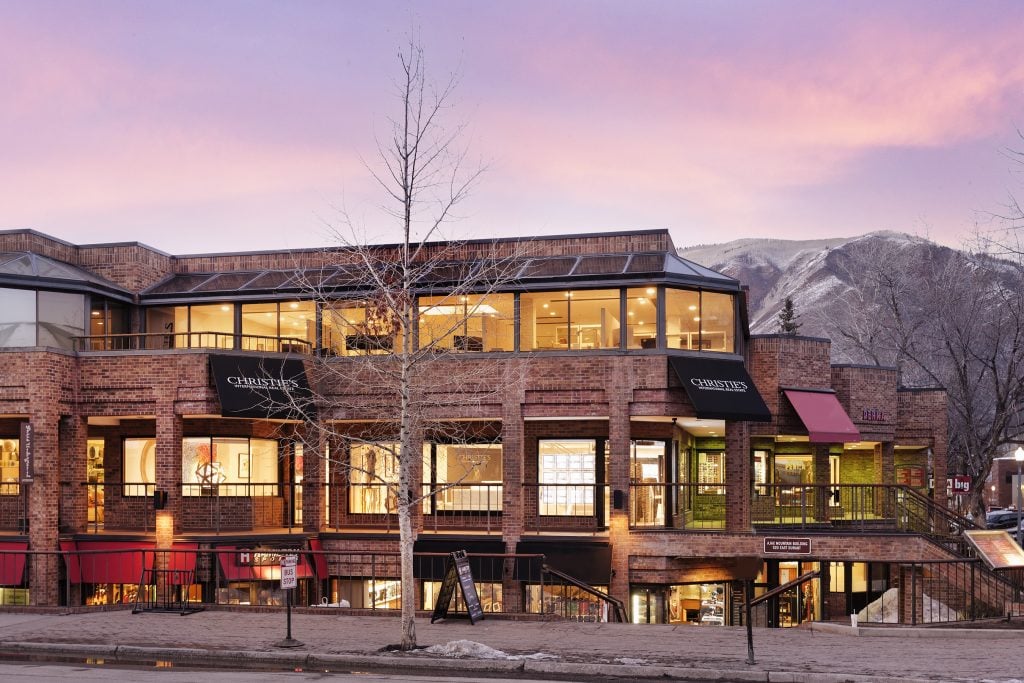
“This is without a doubt the busiest it’s ever been,” one dealer told Arnet News.

Katya Kazakina

On a sunny afternoon in Aspen this week, Sotheby’s executive Lisa Dennison threw her silver Chanel ballet slippers into a backpack, donned a pair of hiking boots, and trekked up to the Pine Creek Cookhouse. There, surrounded by mountain peaks and below antler chandeliers, a meal and performance by artist, poet, and chef Precious Okoyomon awaited.
Dennison was among 100 art patrons attending the August 4 luncheon, one of many attractions during this week of openings, dinners, and fundraisers. Anchored by the Aspen Art Museum’s annual summer Art Crush gala, the festivities see the wealthy Rocky Mountains enclave transform into an art-world epicenter, where billionaires mingle with artists, curators, and dealers.
Spotted around town were Domenico de Sole, Janna Bullock and Jamie Tisch, Miami-based Jorge and Darlene Perez, and Debra and Dennis Scholl, as well as Naima Keith, co-curator of the upcoming Prospect 5 New Orleans, and Colombian artist Doris Salcedo.
“We are in a very remote location, 8,000 feet up in the air, so it’s interesting that everyone is able to come together and have conversations in a very different environment,” said Nicola Lees, who became the Aspen Art Museum’s 11th director just as the pandemic hit last year.
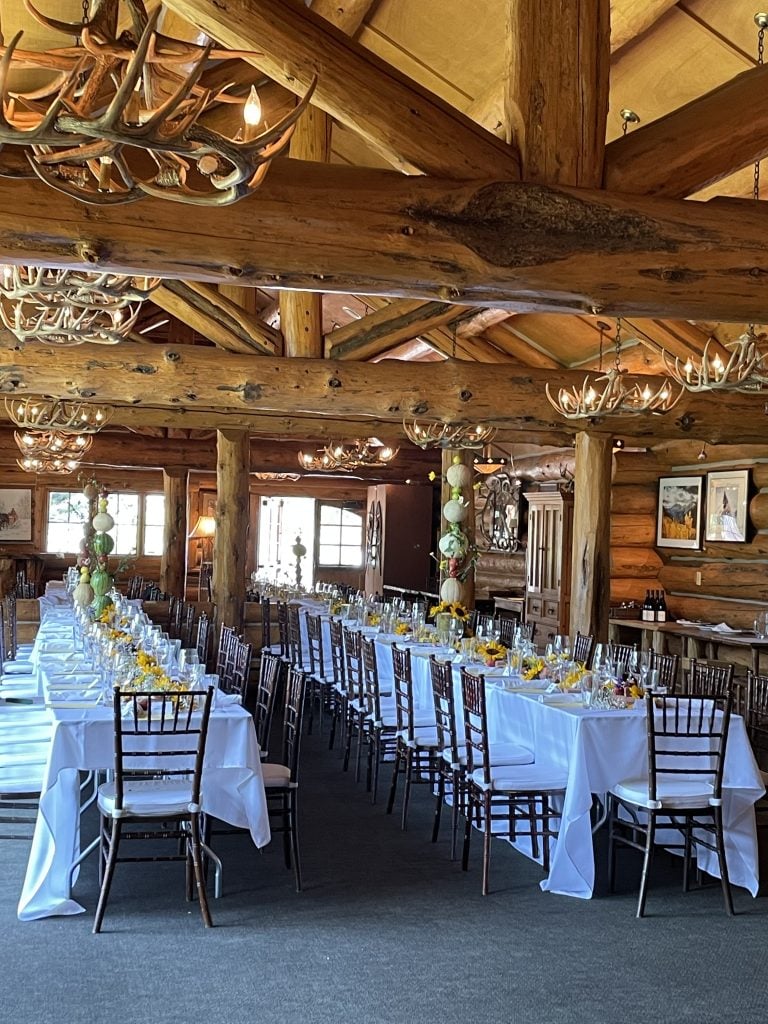
Aspen Art Museum’s luncheon at the Pine Creek Cookhouse. Courtesy: Lisa Dennison
The scene is a welcome change. Last year, Art Crush was cancelled because of Covid-19. Since then, affluent Covid refugees poured into Aspen, snapping up chalets. The art world took note.
“It’s the same tenor as the Hamptons and Palm Beach,” Dennison said. “You go where the money is.”
Aspen gallery night on August 5 will have 20 participants, including new arrivals such as Almine Rech, White Cube, Lehmann Maupin, Carpenters Workshop, Honor Fraser, and Mitchell-Innes & Nash. Christie’s is previewing gems by Monet and Redon from the $200 million Cox collection that’s heading to auction this fall. At the Intersect Aspen art fair, there’s a $25 million Clyfford Still painting for sale (more on that below). Paintings by Mary Weatherford, Vaughn Spann, and Oscar Murillo installed now at the Aspen Art Museum will be sold at auction to raise as much as $3 million for the institution on August 6.
“This is without a doubt the busiest it’s ever been,” said Kelly Woods, senior director of New York’s Marianne Boesky Gallery, which has been in Aspen since 2017. “You can’t get a dinner reservation. You can’t find a parking spot. Everybody has a new home with new walls to fill.”
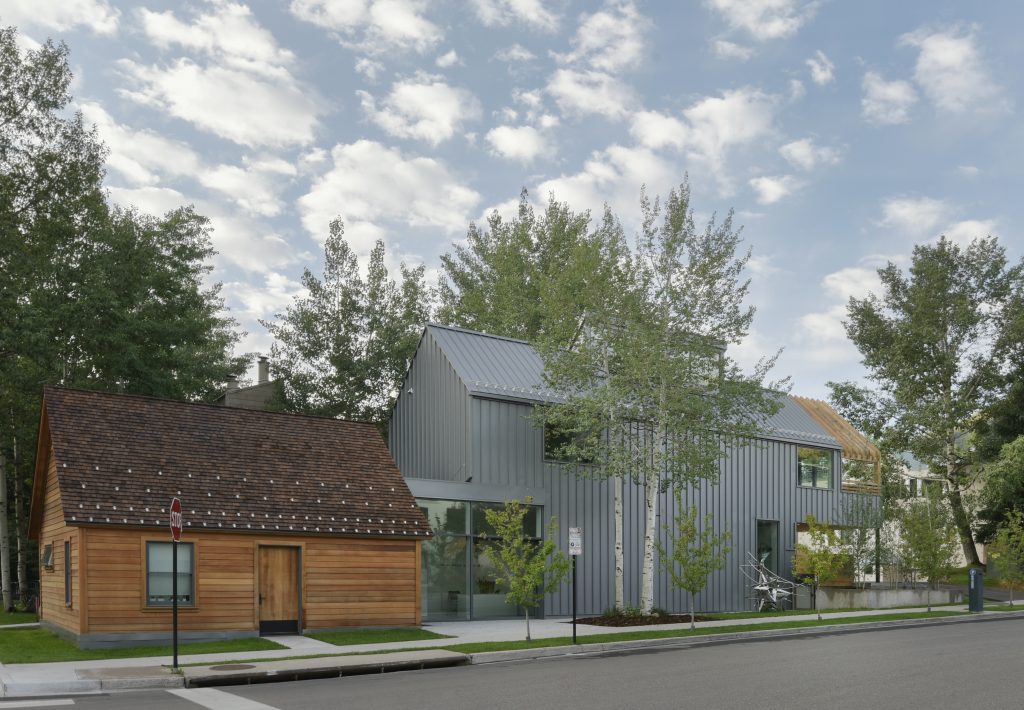
Marianne Boesky’s Aspen gallery opened in 2017. Courtesy: the gallery.
The presence of top international galleries elevated the experience for collectors, said Dennis Scholl, who comes to Aspen from Miami every summer. “There are so many high-quality pop-up galleries this year,” he said. “They brought incredible things.”
Aspen’s appeal isn’t new. Christie’s deputy chairman Capera Ryan has been coming to the city for two decades, supporting programs at the Anderson Ranch and Aspen Art Museum.
“We are committed to giving money and bringing our talent to celebrate the talent that’s already here,” she said. In July, Christie’s sponsored a dinner at Anderson Ranch, recognizing artist Simone Leigh, who will represent the U.S. at the next Venice Biennale.
Christie’s also underwrote a conversation series this summer that brought out artists such as Derrick Adams, Alexis Rockman, and Jennifer Guidi. Scott Rothkopf, senior deputy director of the Whitney Museum, will give a talk at Anderson Ranch on August 5. Mary Weatherford will be honored at Art Crush, which is sponsored by Sotheby’s (the auction house waived its buyer’s premium for the charity auction).
The city has beloved local galleries, such as Baldwin and Casterline Goodman, which are currently showing New York-based Will Cotton and German painter Alexander Holler. This summer, they are joined by pop-up galleries from around the world.
Pop-ups became a thing during the pandemic, offering dealers much-needed face time with collectors in the absence of in-person art fairs.
“It started as a necessity,” said D. Ashlee Harrison, director of the Americas at Carpenters Workshop Gallery, which focuses on the intersection of art and design and currently shares a space in Aspen with Lehmann Maupin (and in the Hamptons with Christie’s). “Our clients are not in New York. They retreated to Palm Beach, the Hamptons, Aspen. These destination markets became anchor points.”
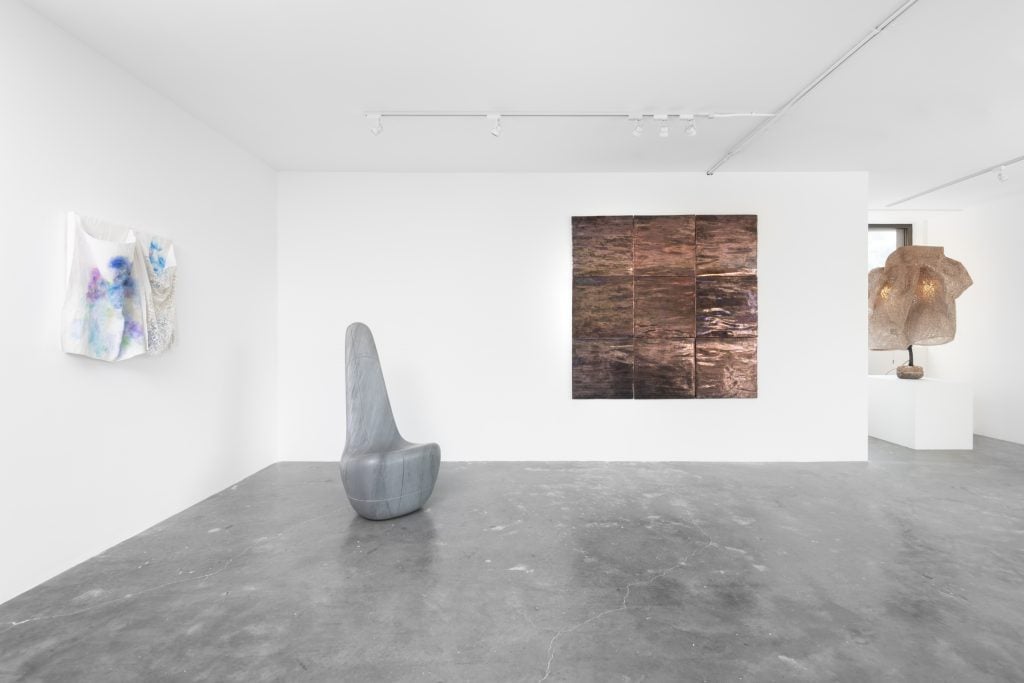
An installation of Material Space exhibition at Lehman Maupin/Carpenters Workshop in Aspen. Courtesy: Lehman Maupin.
Unlike some other wealthy retreats, Aspen is home to world-renowned cultural and civic institutions, such as the Aspen Institute, attracting a who’s who of visionaries, world leaders, and business titans.
“There’s a much richer intellectual community than in the Hamptons or Palm Beach,” said Sarah Levine, director of communications and marketing at Lehmann Maupin. At one Aspen soirée last month, she bumped into a dozen current and former U.S. ambassadors. “The discussion was around cultural diplomacy,” she said.
Aspen is a popular destination for the mega-wealthy from Houston, Dallas, Chicago, Miami, and Los Angeles, dealers said. But it’s a seasonal market, said Honor Fraser, who opened a pop-up gallery in town last December, after relocating there with her husband and kids. During the winter, she mostly sold to out-of-town clients. During the past month, her gallery has seen “a huge amount of traffic,” she said.
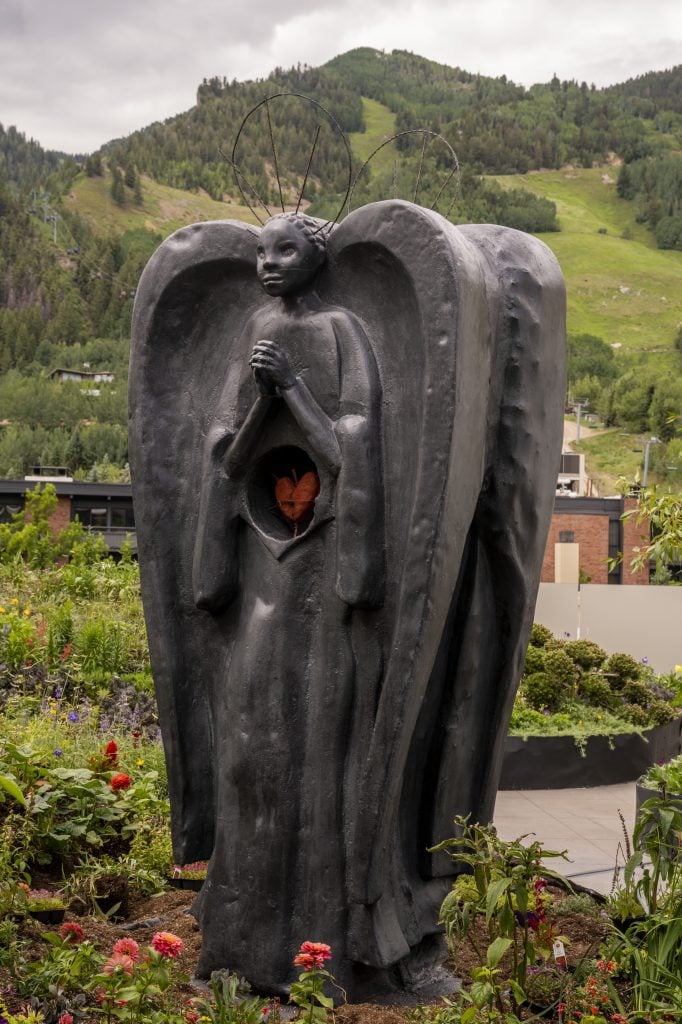
Precious Okoyomon’s sculpture, My heart makes my head swim (ditto, ditto battle angel, 2021, offered at Art Crush auction. Courtesy: the artist, Quinn Harrelson, Los Angeles.
Deepening relationships with collectors from other parts of the country was a major draw for galleries.
“Given that we do have a strong presence in New York, we wanted to go to an area where we can meet people from other parts of the country,” said Ethan Buchsbaum, senior director at Almine Rech, who’s been running its Aspen branch since May. “We were thinking about how to engage with an audience we haven’t had an opportunity to reach.”
The gallery set up an intense program, changing shows every two-and-a-half weeks from early June till mid-September (normally the exhibitions last four to six weeks). The first show of paintings and works on paper by Nathaniel Mary Quinn sold out, with prices ranging from $30,000 to $145,000. So did works by Genesis Tramaine, priced from $15,000 for works on paper to $80,000 for paintings.
“If you change exhibitions quicker, collectors have a reason to come back,” Buchsbaum said.
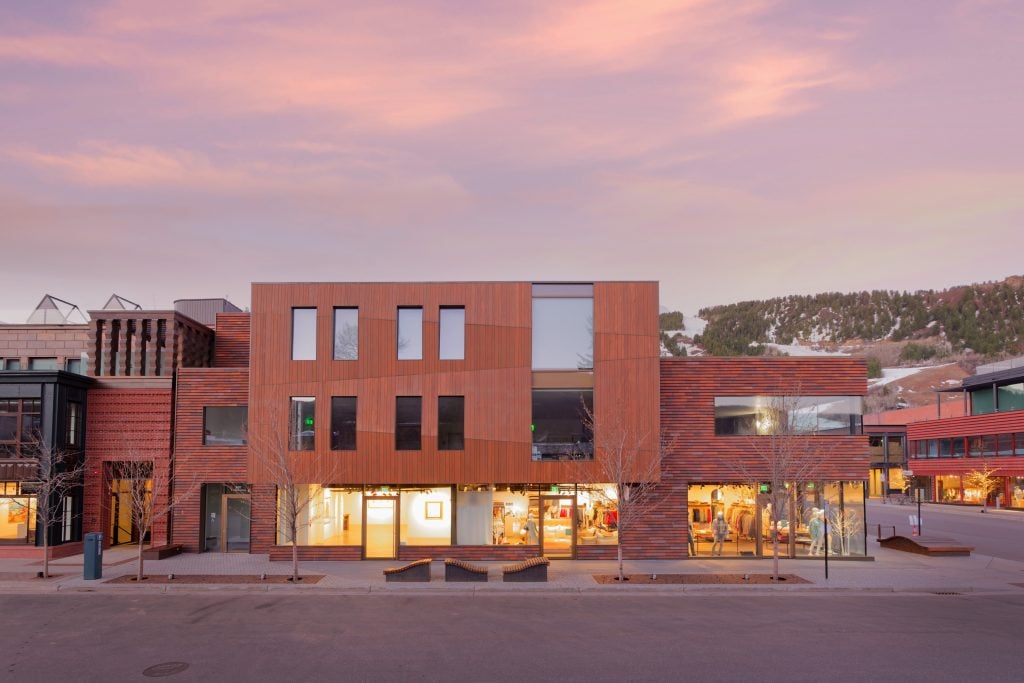
This building in downtown Aspen houses three pop-up galleries: Almine Rech on the ground floor, and Lehmann Maupin and Carpenters Workshop on the second floor. Courtesy: the galleries.
Local collectors often look for large-scale artworks to decorate their huge homes, said art dealer David Maupin. At his 3,000-square-foot Aspen space, artworks and design objects are framed by mountain vistas seen through the windows. A new gallery client, a Texas-based museum trustee, bought a five-by-five-foot piece by Nari Ward, priced at $185,000.
Aspen’s small-town vibe was a pleasant change from more stressful urban settings, where most galleries are based. People start their days outdoors, with a hike or a walk. Many come downtown, where galleries cluster around the Aspen Art Museum, to lunch and shop. They stop by galleries to see art shows, schmooze, and have a coffee (or tequila).
Pop-ups have a different rhythm from art fairs, which are intense and transactional by nature.
“You are able to really connect with collectors,” said Josephine Nash, director at Mitchell-Innes & Nash, which took a space in Aspen from mid-June to mid-August. “We visit their homes, learn about their collecting habits, introduce them to artists in our program.”
They also make sense financially. Nash said that the gallery’s outlay for a two-and-a-half-month pop-up in Miami last winter was roughly the same as just a few days at Art Basel Miami Beach. To be sure, a major art fair can result in “100 curators walking through your booth in a day, usually with their boards, making decisions on the spot,” she said. “That we can’t recreate on our own.”
So as the fairs are starting to return, galleries are trying to figure out the right balance. Most said they’d like to return to Aspen, though no commitments have been made yet.
“This isn’t going to be one and done,” said Harrison of Carpenters Workshop. “I think the fairs are essential, but what’s nice about doing a pop-up is that you can ingratiate yourself with the local community. We have more time. We can do more programming. We can invest more into the space and the experience. We get to connect on a deeper level.”
The most expensive work of art for sale in Aspen this week is a large-scale painting by Clyfford Still, offered for $25 million at Intersect Aspen, which ends August 5. The price would stand out even at a top global art fair like Art Basel, let alone a regional event, better known for emerging and affordable works.
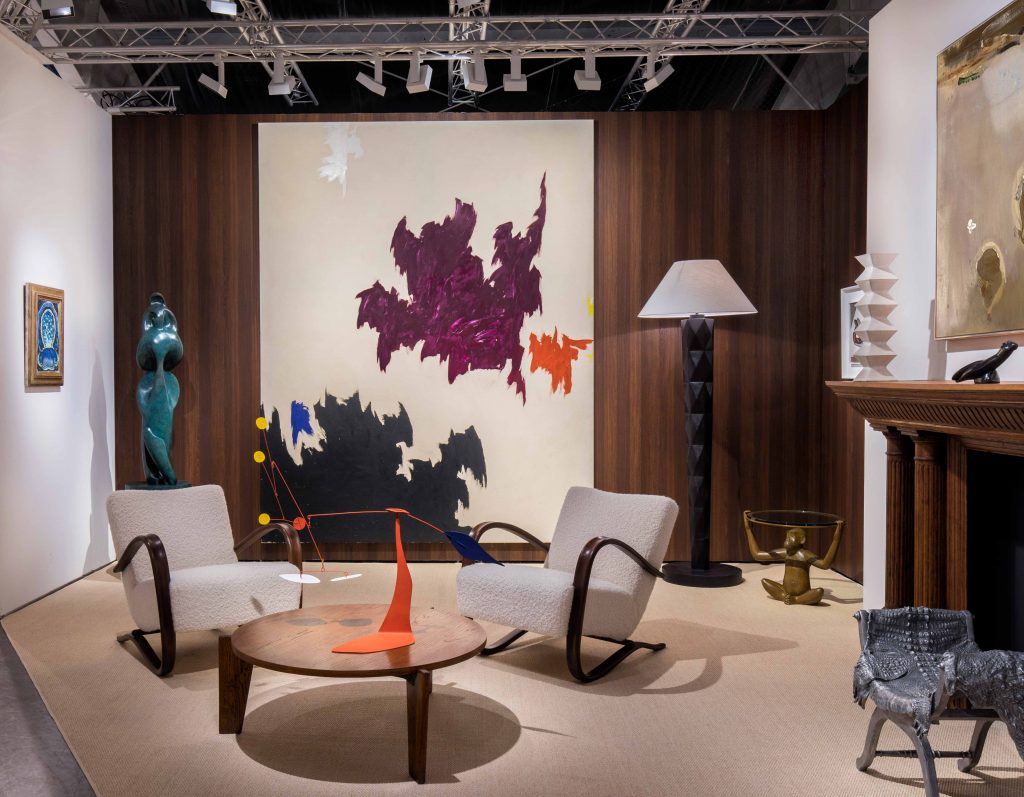
Sélavy by Di Donna presentation at Intersect Aspen, 2021, includes a $25 million painting by Clyfford Still. Photographs courtesy Sélavy by Di Donna, Southampton.
The work is being exhibited by Selavy by Di Donna, a pandemic-year offshoot of Di Donna Galleries in New York, which focuses on high-end art and design. Its booth in Aspen is a mix of blue-chip paintings, elegant 1930s furniture, and whimsical objects like a monkey table by François-Xavier Lalanne.
Painted in 1965 near Westminster, Maryland, Still’s PH-568 is more than 9 feet tall and 7 feet wide.
The asking price represents a 56 percent increase in just over three months. On April 19, PH-568 fetched $16.2 million at Sotheby’s in Hong Kong, selling within its estimated range of $13.5 million to $18.7 million.
It was bought by art dealer Robert Mnuchin, according to people familiar with the sale, and was on view at the Mnuchin gallery in New York in July. The gallery declined to comment on the consignor, but said it wasn’t Mnuchin. When reached by phone, Mnuchin declined to comment. According to the provenance published by the gallery, the work is in a private collection.
When asked to comment on the price increase, dealer Emmanuel Di Donna said that auctions aren’t perfect mechanisms.
“Sometimes you have your rational exuberance at auction, with crazy prices that make no sense,” he said. “And sometimes masterpieces sell inexpensively.”
Offering it in Aspen, about 200 miles from the Clyfford Still Museum in Denver, is a better context for the work than Hong Kong, he said.
“We are in discussions with a couple of big collectors at the moment,” he said. “People who didn’t get a chance to see it. It’s a real stunner of a painting.”